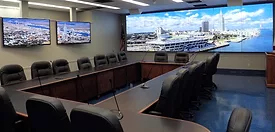Physical
Owing to the increasing frequency, diversity and sophistication of ATM attacks, banks must rethink and modernize security in order to better circumvent ATM crime and protect their bottom line
Read More
Effective video collaboration: What you need to consider before investing in a system
Jon Litt, Senior Manager, Government Solutions (US) at Christie shares his five key considerations to ensuring an impactful, efficient professional video collaboration solution.
February 22, 2021
Sign-up to receive top management & result-driven techniques in the industry.
Join over 20,000+ industry leaders who receive our premium content.
SIGN UP TODAY!Copyright ©2025. All Rights Reserved BNP Media.
Design, CMS, Hosting & Web Development :: ePublishing














